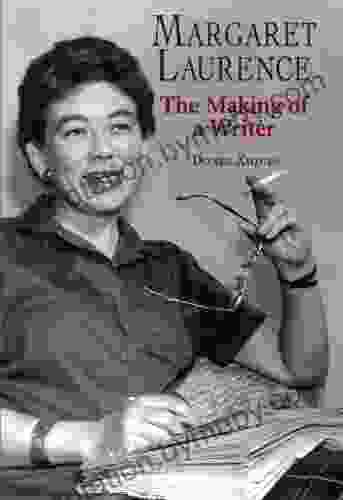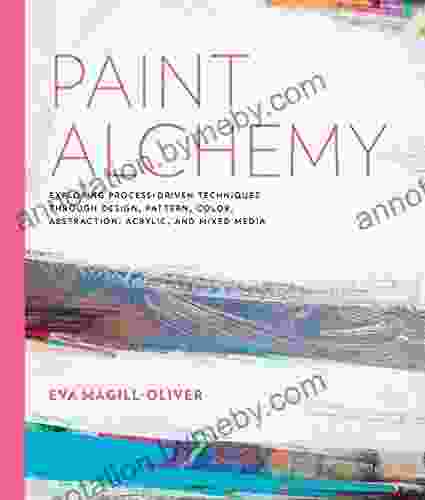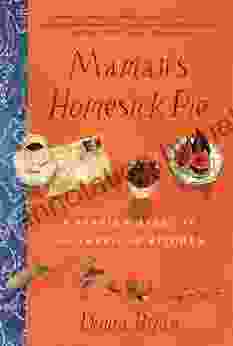Exploring Process Driven Techniques Through Design Pattern Color Abstraction

In the ever-evolving landscape of software development, the quest for innovative and efficient techniques remains paramount. Design patterns have emerged as a cornerstone for crafting robust, maintainable, and extensible software systems. Coupled with process driven techniques, they empower developers to navigate the complexities of software design with confidence and precision.
4.4 out of 5
| Language | : | English |
| File size | : | 15003 KB |
| Text-to-Speech | : | Enabled |
| Screen Reader | : | Supported |
| Enhanced typesetting | : | Enabled |
| Print length | : | 118 pages |
This article will embark on an in-depth exploration of the synergies between design patterns and process driven techniques, with a particular focus on the transformative power of abstraction. We will uncover the principles of process driven design, delve into the intricate world of design patterns, and unveil the practical application of abstraction in software development.
Process Driven Design: A Foundation for Excellence
Process driven design is a systematic approach to software development that emphasizes the importance of well-defined processes and methodologies. It provides a structured framework for developers to follow, ensuring consistency, quality, and efficiency throughout the development lifecycle.
At the heart of process driven design lies the concept of abstraction, which involves breaking down complex problems into smaller, more manageable components. By identifying and abstracting commonalities, developers can create reusable and interchangeable elements that can be applied in various contexts.
Design Patterns: Reusable Solutions for Common Design Challenges
Design patterns are proven solutions to recurring problems in software design. They provide a library of reusable patterns that encapsulate best practices and proven techniques. By leveraging design patterns, developers can accelerate development, improve code quality, and enhance maintainability.
Design patterns come in various categories, each addressing specific design challenges. Creational patterns, for instance, focus on object creation mechanisms, while structural patterns deal with the organization and composition of objects. Behavioral patterns, on the other hand, govern the communication and collaboration between objects.
Abstraction in Design Pattern Colorization
Abstraction plays a pivotal role in the application of design patterns. By abstracting common design elements and relationships, developers can create more generic and reusable solutions. This abstraction process involves identifying the essential characteristics of a design pattern while omitting implementation details.
Colorization is a technique that visually represents the abstraction levels within a design pattern. By assigning different colors to different levels of abstraction, developers can gain a clearer understanding of the pattern's structure and relationships. This colorization enhances comprehension and facilitates the application of design patterns in real-world scenarios.
Practical Application of Design Patterns and Abstraction
To illustrate the practical application of design patterns and abstraction, let's consider the Adapter pattern. The Adapter pattern allows objects with incompatible interfaces to work together by providing a bridge between them. By abstracting the interface conversion logic, the Adapter pattern promotes flexibility and extensibility.
In a colorized representation of the Adapter pattern, the adapter class would be assigned a distinct color, indicating its role as an intermediary between the client and target classes. This colorization would highlight the abstraction layer introduced by the adapter, making it easier to understand and implement the pattern.
Benefits of Process Driven Techniques and Design Patterns
The adoption of process driven techniques and design patterns brings forth a multitude of benefits for software development teams.
- Improved Code Quality: Process driven techniques and design patterns enforce best practices and proven solutions, leading to higher code quality and reliability.
- Increased Maintainability: Modular and reusable code structures facilitated by design patterns enhance maintainability, reducing the effort required for future modifications.
- Enhanced Extensibility: Design patterns promote loose coupling and dependency inversion, making it easier to extend and adapt software systems to changing requirements.
- Accelerated Development: By leveraging pre-defined patterns and reusable components, developers can accelerate the development process while maintaining high standards of quality.
- Improved Communication: Process driven techniques and design patterns provide a common language for developers, fostering better communication and collaboration.
The synergy between process driven techniques and design patterns, empowered by the transformative power of abstraction, unlocks a world of possibilities for software developers. By embracing this approach, teams can elevate their design practices, create more robust and maintainable systems, and accelerate development while ensuring quality.
This article has provided a comprehensive overview of the concepts, principles, and practical applications of process driven techniques and design patterns. As you delve deeper into this fascinating domain, you will discover the true potential of these invaluable tools for crafting software systems that stand the test of time.
4.4 out of 5
| Language | : | English |
| File size | : | 15003 KB |
| Text-to-Speech | : | Enabled |
| Screen Reader | : | Supported |
| Enhanced typesetting | : | Enabled |
| Print length | : | 118 pages |
Do you want to contribute by writing guest posts on this blog?
Please contact us and send us a resume of previous articles that you have written.
 Book
Book Novel
Novel Page
Page Chapter
Chapter Text
Text Story
Story Genre
Genre Reader
Reader Library
Library Paperback
Paperback E-book
E-book Magazine
Magazine Newspaper
Newspaper Paragraph
Paragraph Sentence
Sentence Bookmark
Bookmark Shelf
Shelf Glossary
Glossary Bibliography
Bibliography Foreword
Foreword Preface
Preface Synopsis
Synopsis Annotation
Annotation Footnote
Footnote Manuscript
Manuscript Scroll
Scroll Codex
Codex Tome
Tome Bestseller
Bestseller Classics
Classics Library card
Library card Narrative
Narrative Biography
Biography Autobiography
Autobiography Memoir
Memoir Reference
Reference Encyclopedia
Encyclopedia Dinesh Kumar Goyal
Dinesh Kumar Goyal Dianne Maroney
Dianne Maroney Les Dale
Les Dale Mary Reese Paul
Mary Reese Paul Irenosen Okojie
Irenosen Okojie Dennis Carstens
Dennis Carstens Donald Frias
Donald Frias Dianne Meili
Dianne Meili Diana Whitney
Diana Whitney Dexter Lives
Dexter Lives Dominic Stevenson
Dominic Stevenson Dinty W Moore
Dinty W Moore Diane Muldrow
Diane Muldrow Peter Burns
Peter Burns Richard Ross
Richard Ross Finn V Gratton
Finn V Gratton Dina Rudick
Dina Rudick Margaret Baumann
Margaret Baumann Liz Climo
Liz Climo M O Olivares
M O Olivares
Light bulbAdvertise smarter! Our strategic ad space ensures maximum exposure. Reserve your spot today!

 Demetrius CarterUnlock Your Golfing Potential: The Complete Golfer Manual Discipline Practice...
Demetrius CarterUnlock Your Golfing Potential: The Complete Golfer Manual Discipline Practice... Martin CoxFollow ·11.5k
Martin CoxFollow ·11.5k Henry JamesFollow ·9.7k
Henry JamesFollow ·9.7k Ruben CoxFollow ·16k
Ruben CoxFollow ·16k Henry HayesFollow ·15.7k
Henry HayesFollow ·15.7k Albert CamusFollow ·15k
Albert CamusFollow ·15k J.D. SalingerFollow ·15.8k
J.D. SalingerFollow ·15.8k Jerry WardFollow ·18.6k
Jerry WardFollow ·18.6k Jermaine PowellFollow ·18.7k
Jermaine PowellFollow ·18.7k

 Cruz Simmons
Cruz SimmonsGuide To Pencak Silat Kuntao And Traditional Weapons:...
Immerse yourself in the captivating world of...

 Dalton Foster
Dalton FosterUnlock Your Financial Freedom: Dive into the ABCs of Real...
Are you ready to embark on a...

 George Orwell
George OrwellThe Advanced Guide to Real Estate Investing: Your...
Are you ready to embark on...

 Will Ward
Will WardMargaret Laurence: The Making of a Writer
Margaret Laurence (1926-1987) was one of...

 Jorge Amado
Jorge AmadoThe ABCs of Property Management: A Comprehensive Guide...
Owning and managing rental...
4.4 out of 5
| Language | : | English |
| File size | : | 15003 KB |
| Text-to-Speech | : | Enabled |
| Screen Reader | : | Supported |
| Enhanced typesetting | : | Enabled |
| Print length | : | 118 pages |












